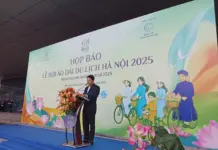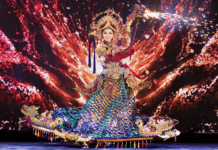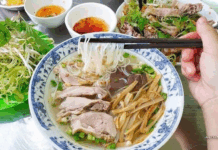Vietnam is a land of delicious and tasty specialties, and some of the food has the utmost honor above all else. Once they were served only for Kings and Queens, which contain rich nutrition and awesome taste. These were once themselves the royalties of Vietnamese food.
Check out 10 Vietnamese plates that was made for royals below for more insight.
10. Swallow Bird Nest (To Yen)
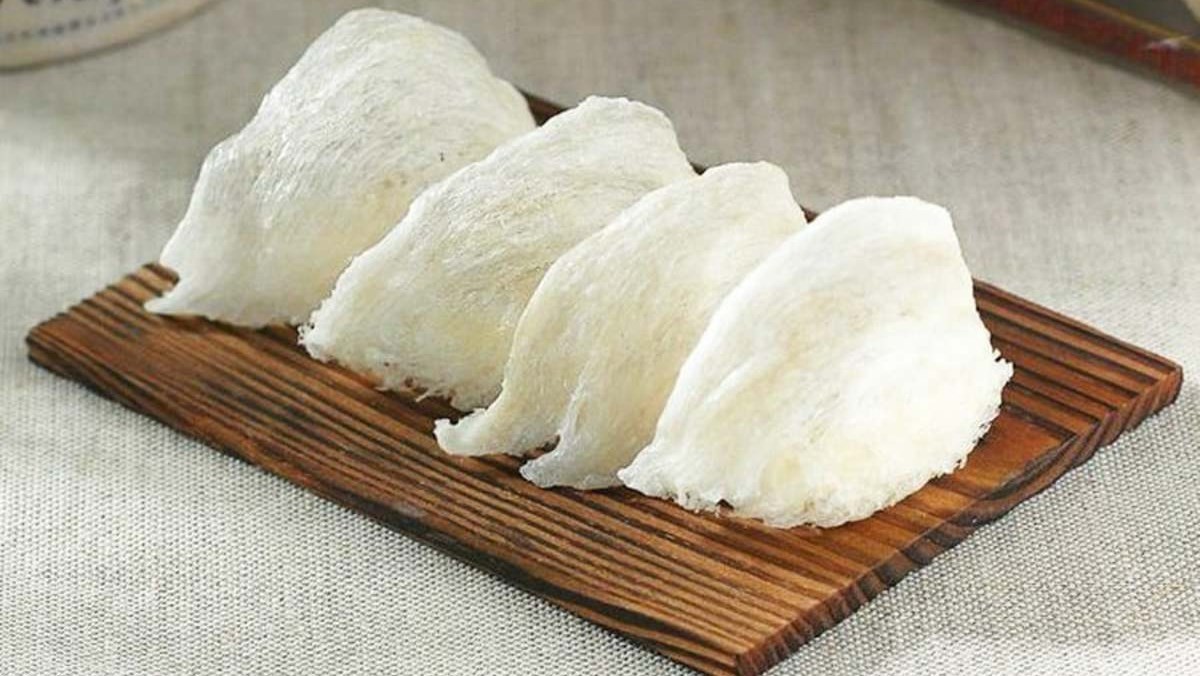 |
| Photo: Getty Images |
The swallow bird has always been considered as a symbol of a good luck to Vietnamese people. In addition, the nest contains a protein, calories and vitamin that are good for men, women, young and old.
The soup from Vietnamese Swallow Bird Nest is credited with extraordinary healing properties – the return of youth, prolongation of life, increase in male potency, cure for asthma, and the glycoprotein found in the nests, dissolving in water, stimulates cell division in the human immune system, on the basis of this element, scientists are trying to invent a cure for AIDS and others dangerous viruses. The soup is also very nutritious because more than 50% of the content of bird saliva is protein.
Nests have often been harvested from the offshore islands of Khanh Hoa province. This is once reserved for the absolute majesties only, for they are extremely difficult to harvest in vast amount and the job is a highly dangerous one. These days the delicacy has somehow come closer to the enjoyment of the mass, since natives have learnt to farm the birds.
9. Water Spinach (Rau Muong)
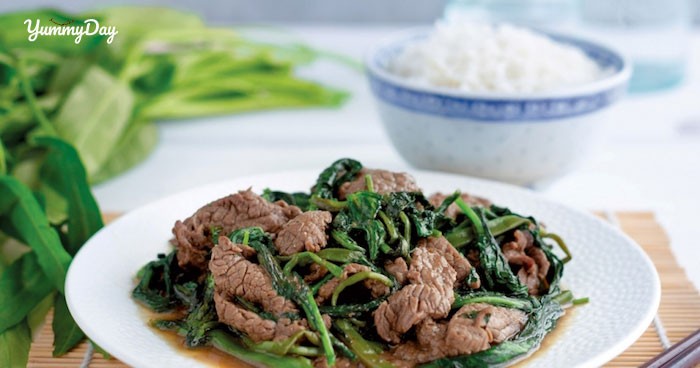 |
| Photo: YummyDay |
Being a peasant’s food, water spinach is an unlikely candidate for the king’s menu. However, the fine spinach of Linh Chieu area (Phuc Tho district, Hanoi) was once a favorite of palace diners, with its soft texture and delicate taste. It was indeed called the king’s spinach. To maintain its famous characteristics, the vegetable is raised with a great deal of effort and care: farmers have to cultivate near the soft-soiled bank of Red river to make use of the constant flow and for the plant to take in the alluvium.
Water spinach is a powerhouse of nutrients that benefit your body as well as your skin and brain. It contains abundant quantities of water, iron, vitamin C, vitamin A and other nutrients and can be eaten cooked or raw. It is mostly used in salads as well as other dishes to boost their nutrient content. Juice of water spinach is also very beneficial.
8. Shrimp paste of Ha Yen
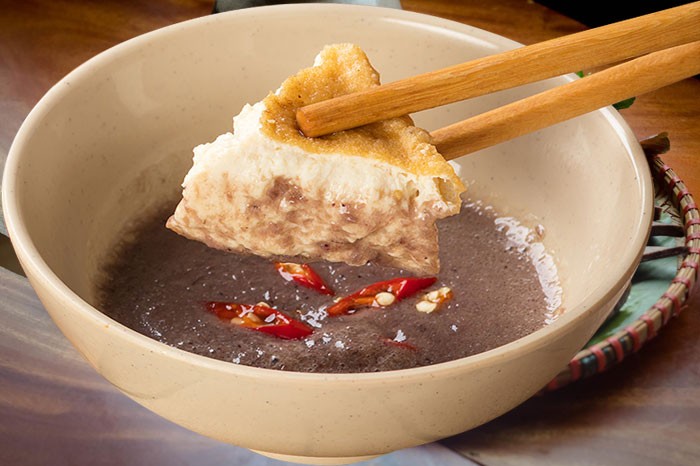 |
| Photo: Dalattrip |
This is a unique and rare specialty in the lowlands of Thanh area, in which the most famous places are two villages Dinh Trung and Yen Xa in Ha Yen commune, Ha Trung district. The work of making tiny shrimp paste requires in special season, when tiny shrimp is good and fat. People choose only tiny shrimp to make sauce. The tiny shrimp paste,longer more delicious, better three months or more.
Previously, in order to make tiny shrimp paste for the king, the dignitaries in the village have to choose the experienced people to catch tiny shrimp.And the group had to go to the Gia Gia river in the village of Co Dam (the current is Bim Son) catch type of tiny shrimp with transparent body live in the bundle of many algae, only this type of shrimp offer delicious broth. For other kind of shrimp has the white opaque body is for normal people use only.
Tiny shrimp must be selected carefully; no impurities can be brought into salt water. The added ingredients are small roasted rice powder, pounding into small power, to get the smooth powder. White salt must also be roasted thoroughly. The jar for containing is a small neck jar and has been used many times, if people put shrimp into the new jar, the tiny shrimp paste is reduced the quality very much. Put washed tiny shrimp into the basin of water, add salt, roasted rice powder, and put into the jar.
7. Anh vu fish
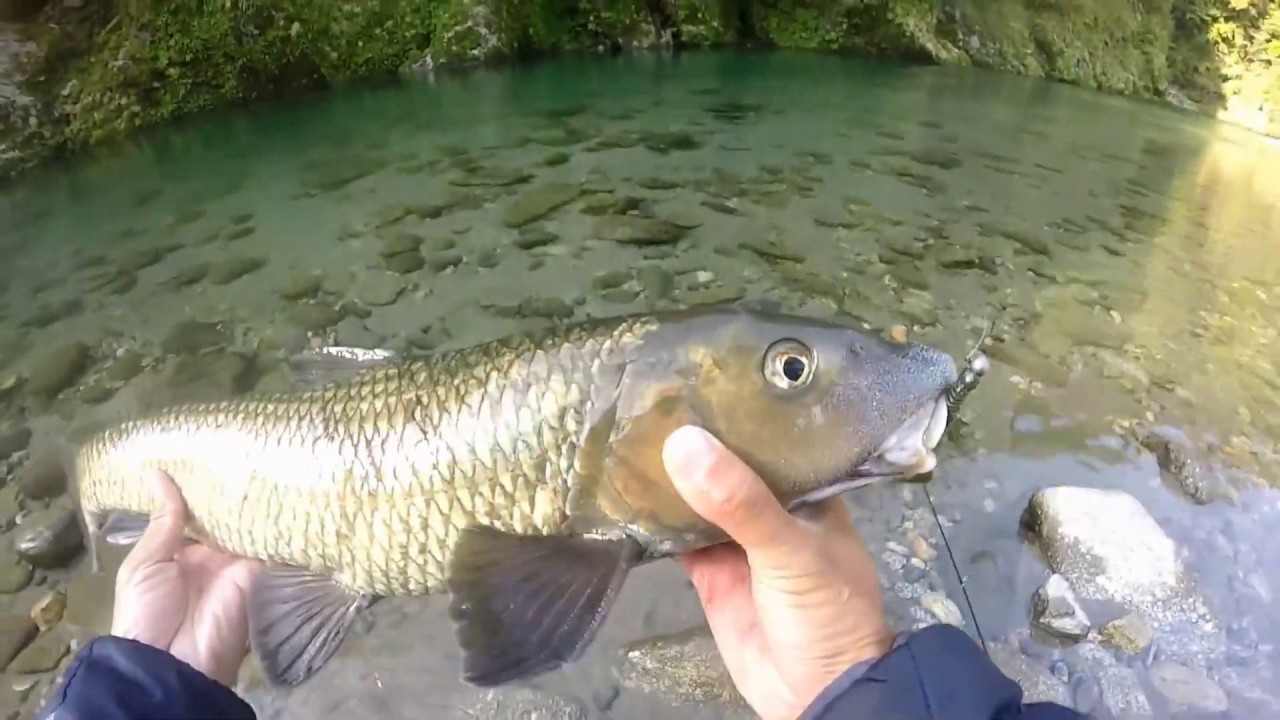 |
| Photo: Youtube |
Anh vu fish (also known as Tien Vua fish), according to the Dai Viet Su Luoc – history book (written in the 14th century) and the Dai Viet Su Ky Toan Thu – history book written in the 15th century), the third Hung King, named Hung Quoc Vuong, a fishing man caught in the Lo River a strange fish, green scales on back, white scales on belly, red fins, mouth like pig’s mouth.
Feeling strange, this man brought the fish to the king. The king found this fish meat is sweet, more fragrant than any other fish, when he finished the dish, the king felt clear mind and comfortable as a tonic. The king said that this was a rare species of fish, from then on; people who have caught such fishes have to offer the king.
This fish has thick body, tapering toward the tail with two pairs of whisker. The fish body is gray color, pale yellow belly. This fish has lower mouth, with triangular broad lips, with many spines. Scales of this fish are straight and not as much as other fish.
Anh Vu only eat algae and live in clear water, in deep caves and when water cold they come out to find food. Therefore, it is a feat to catch an anh vu fish. In the cold season, the season of anh vu fish come out, many fishermen have to drink fish sauce, hold their breath and dive to catch anh vu fish. Many fishermen say the fish is rare, but to catch that fish sometime is the exchange of life.
6. Ngu Banana
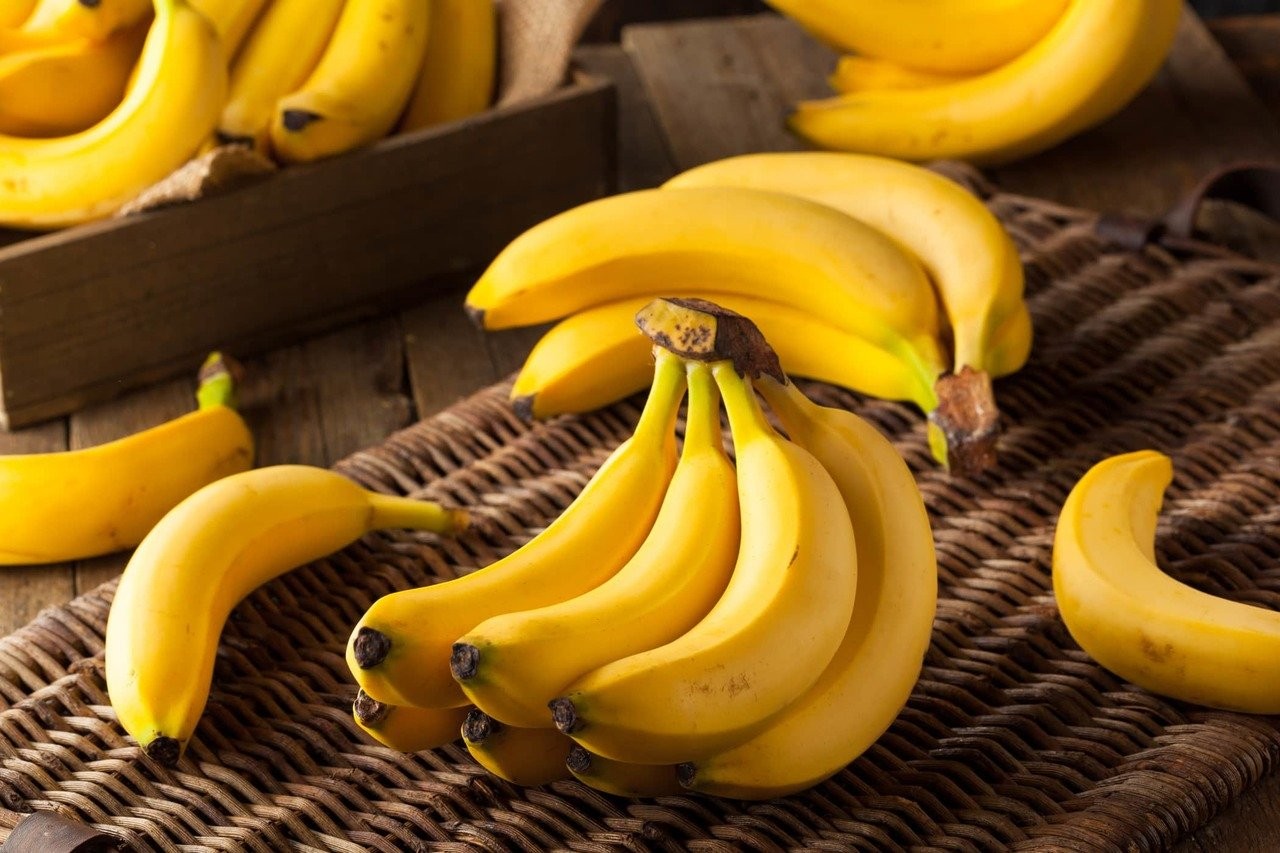 |
| Photo: HITA |
In the time of the Tran dynasty, which many historians refer as the most glorious time in the history of Vietnam, many high officials and royal family members come from Nam Dinh province. To pay tribute to the wise and benevolent rulers, the people of Nam Dinh have come up with a unique gift that is Ngu banana. Still available today, the fruit is rather tiny, has a silky smooth yellow skin, a pleasant aroma and a seducing sweetness onto them. Adaptability has proven futile, for somehow the banana only yields to the love of the homeland of Tran kings.
5. Dong Tao Chicken
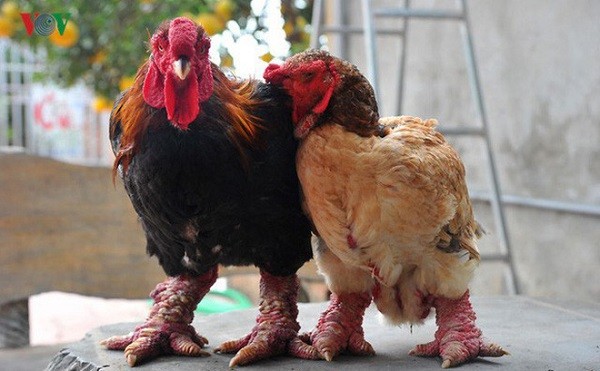 |
| Photo: VOV |
Dong Tao chickens which in the past were used as a delicacy offering to kings, have risen to fame during the recent Lunar New Year (Tet) as people sought them to use for gifts and eating. This chicken is well-known for its awkward-looking, bulky legs.
Dong Tao chickens, better known as “Dragon Chickens” are native to Dong Tao Commune in Khoai Chau District. This special species of Vietnamese chicken may look horribly deformed but they are among the world’s most expensive poultry as their massive thighs are a delicacy in Vietnam.
It is very difficult to breed this rare species because they are extremely sensitive to changes of temperature and weather and tend to lay fewer eggs than common chickens. Their huge legs and feet also make the hatching process more difficult, so more attention is needed from farmers to produce chicks.
4. Longan and Lotus Seed
 |
| Photo: HavaMall |
With longan and lotus seeds, the Vietnamese can create a kind of special-flavor tea. It is considered the quintessence of the heaven and earth. The tea is aromatically fragrant with an original flavor.
Containing longan fruit pieces and lotus seeds, this kind of tea is fragrant with a full-bodied taste. The original and naturally flavored beverage is rich in glucose, sucrose, proteins, and other minerals. Longan flesh is sweet and contains niacin, which aids metabolism and keeps the skin, nervous, and digestive systems healthy. Lotus seeds can treat nervous depression and sleeplessness.
Longan and lotus tea is a nourishing drink with natural sweetness. When both of the ingredients combined, it is effective in fighting against anemia and fatigue, and boosting energy levels. Or in other words, they are good in building blood and regenerating Qi. It has a pleasant taste and high nutritional value, and is recognized as valuable medicinal herb.
The flavoured tea is tasty and refreshing; and can easily satisfy your thirst as well as refresh your minds. The rich composition of natural nutrient factors entails the tea with healthy characters, which makes you keep up your spirits among the clean, free and happy mood. If you would like to make a cup of the flavoured tea yourself, you are able to try the simple direction as follows:
3. Cua chicken
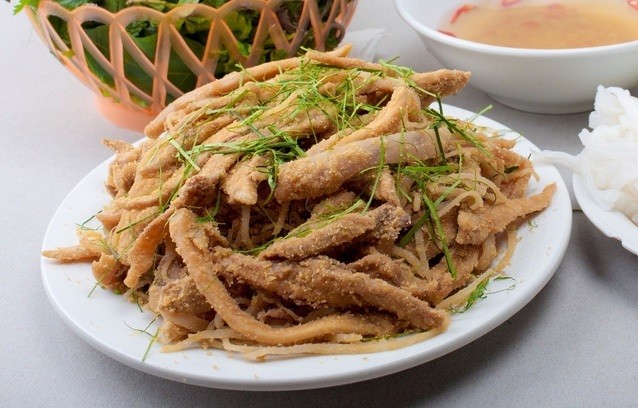 |
| Photo: Vietnamnet |
Farmers are considering taking this specialty of Cua to big business to gain a foothold in the world of cuisine.
The road leading from Highway 9 junction to the land of Cua (Cam Lo, Quang Tri province) was once described as a strip of silk laying across the verdure of mountains and the pass. Cua today is a rich land of red basalt with rubber forests, tea hills and pepper gardens that are verdant all year round.
Besides the exquisite green foliage, Cua is notable for its hundred-year-old specialty – chicken with indigenous quality flesh benefiting from termites as the staple nutritious feed. Rumour has it that this dish was once served in royal meals of King Ham Nghi.
The story goes that around 130 years ago in the prolonged resistance against the French colonialism, mandarins under Nguyen dynasty commanded thousands of soldiers and people from different localities to gather in Tan So (presently Cam Chinh commune) to commence building Tan So citadel in 1883, which was mostly completed in 1885.
During this time, the Cu chicken dish gained some popularity. However, it was not until a battle failure on the night of July 4, 1885 in the Imperial City of Hue when the leading mandarin Ton That Thuyet escorted King Ham Nghi and his entourage to Tan So citadel for a backup plan that this cuisine became famous.
Upon the delegation’s arrival, villagers offered them gourmet dishes including steamed Cu chicken and lotus seed soup. They since then have been included in daily meals of King Ham Nghi and the mandarins. The king during days of the French resistance war also expressed his wish to maintain Cua chicken as an ancestral product in later days of peace. It since has since been in poultry farming in Quang Tri.
2. West Lake Coot
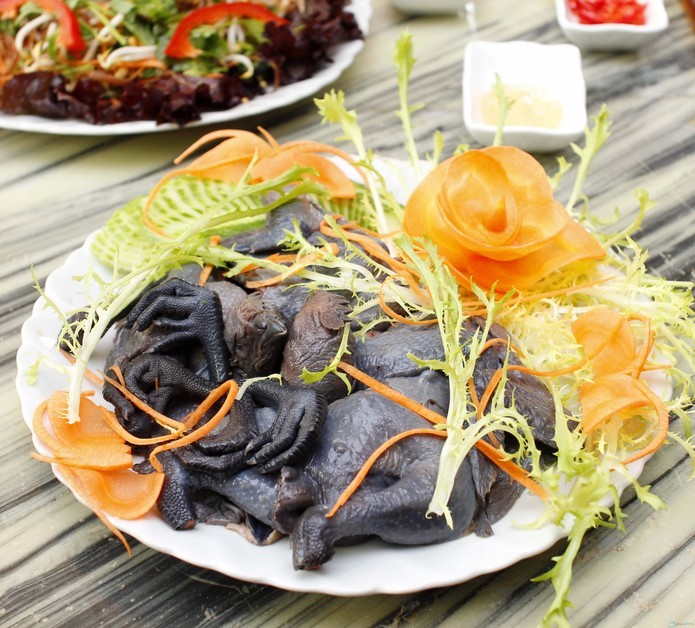 |
| Photo: Vietnamonline |
The Eurasian coot once was a staple in the menu of Vietnamese royalties, and had earned its name in the old Hanoian verse “Pickle of La, basil of Lang, ngo (rice paddy herb) of Dam, tilapia of Dam Set and coot of West lake”. Folk tale has that while these birds are migrating to their winter homes, they stop at high peaks in China and Korea, dig out and consume the precious ginseng, hence the name “sam cam”, which literally translates to “ginseng bird”. For such reason, these coots are believed to be an extremely healthy food. It is also a favorite of the Emperor Tu Duc. Rumor has that the village of Nghi Tam, which resides next to the famous lake where the birds stay during the winter, must pay a tribune of 40-50 coots every year to the Emperor, or face severe punishment. These birds have been hunted intensively in Vietnam, and it is difficult to catch sight of one these days.
1. Husband and Wife Cake (Bánh phu thê)
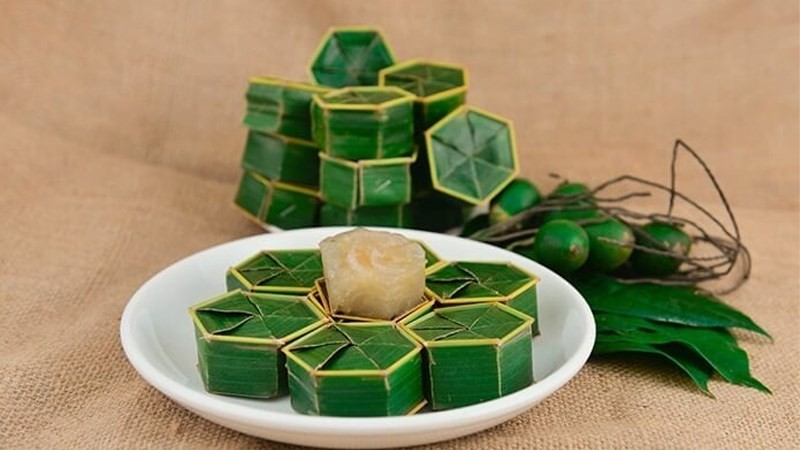 |
| Photo: DienmayXANH |
Bánh phu thê (Husband and wife cake) is a traditional Vietnamese dessert made with a combination of tapioca flour and mung beans. Other ingredients include sugar, grated coconut, and pandan leaves. This dessert is visually appealing due to its translucent green color in the original version.
Once prepared, the cake is wrapped in pandan leaves, then steamed until the texture becomes glutinous. Bánh phu thê is a staple at Vietnamese weddings, and in the past a suitor was known to give this cake to the bride-to-be as a gift.
Nowadays, the bridegroom sends it to the bride on the couple’s wedding day as a symbol of good wishes for the future.

